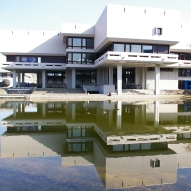Zusammenfassung
For many decades, the solubilization of long-chain triglycerides in water has been a challenge. A new class of amphiphiles has been created to overcome this solubilization problem. The so-called extended surfactants contain a hydrophilic-lipophilic linker to reduce the contrast between the surfactant-water and surfactant-oil interfaces. In the present contribution, the effects of different ...
Zusammenfassung
For many decades, the solubilization of long-chain triglycerides in water has been a challenge. A new class of amphiphiles has been created to overcome this solubilization problem. The so-called extended surfactants contain a hydrophilic-lipophilic linker to reduce the contrast between the surfactant-water and surfactant-oil interfaces. In the present contribution, the effects of different anions and cations on the phase behavior of a mixt. contg. an extended surfactant (X-AES), a hydrotrope (sodium xylene sulfonate, SXS), water, and rapeseed oil were detd. as a function of temp. Nanoemulsions were obtained and characterized by cond. measurements, light scattering, and optical microscopy. All salting-out salts show a transition from a clear region (O/W nanoemulsion), to a lamellar liq. cryst. phase region, a clear phase (bicontinuous L3), and again to a lamellar liq. cryst. phase region with increasing temp. For the phase diagrams with NaSCN and Na2SO4, only one clear region (O/W nanoemulsion) was obsd., which turns into a lamellar phase region at elevated temps. Furthermore, the stability of the nanoemulsions was investigated by time-dependent measurements: the visual observation of phase sepn., droplet size by dynamic light scattering (DLS), and optical microscopy. The mechanism of the different phase transitions is also discussed.




 Altmetric
Altmetric